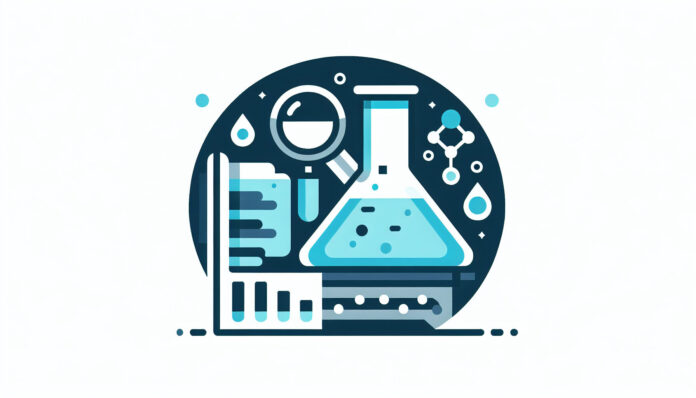Pancreas development in pigs resembles humans much more closely than does the established mouse model. An international team headed by Helmholtz Munich and the German Center for Diabetes Research (DZD) has now produced a comprehensive evolutionary comparison of single-cell atlases of pancreas development. The results open up new prospects for regenerative therapies.
For decades, the pancreas and its development have been a major focus of diabetes and cancer research. Until now, the science was almost exclusively based on mouse models. However, mice differ from humans in many respects—from developmental duration to metabolism and gene regulation.
“Particularly for complex diseases such as diabetes mellitus, we need models that truly resemble humans,” therefore emphasizes Prof. Heiko Lickert. The DZD researcher is the director of the Institute of Diabetes and Regeneration Research at Helmholtz Munich and professor at the Technical University of Munich (TUM).
In a study recently published in Nature Communications, the team presented the first comprehensive single-cell analysis of pancreas development in mice, humans, and pigs. “We were able to demonstrate that pigs resemble humans much more closely than mice in developmental tempo, molecular control mechanisms, and gene regulation,” explains Lickert.
A unique database
A look at the details: Researchers examined more than 120,000 pig pancreatic cells. The cells were obtained from all three stages of pregnancy, which lasts 114 days in pigs. Using high-resolution single-cell RNA sequencing and multi-omics approaches, the team was able to accurately identify developmental stages and cell types.
Comparisons between pigs and early developmental stages in humans show that pigs closely resemble humans in developmental tempo, epigenetic and genetic regulation, and gene regulatory networks. This also applies to the development of progenitor cells and the generation of hormone-producing cells.
Particularly noteworthy is that more than half of the transcription factors that are regulated by the neurogenin-3 (NEUROG3) gene—a key regulator of the development of hormone-producing cells—are identical in pigs and humans. Many of these factors had previously been successfully validated in human stem cell models. This includes key gene transcription factors such as PDX1, NKX6-1, or PAX6, which are crucial for gene regulation and the formation of beta cells.
NEUROG3 plays a central role in pancreas development. It acts like a “main switch,” coding for a transcription factor, which is a protein that can specifically activate other genes and thus has a significant influence on cell development.
New cell population discovered
Another important finding: A special cell group—the primed endocrine cell (PEC)—emerges during embryonic development in both pigs and humans. PECs can differentiate into hormone-producing islet cells.
“These PECs could represent an alternative source for the regeneration of insulin-producing beta cells that can even be generated without the master factor neurogenin-3,” says Lickert. “This could explain why patients with rare NEUROG3 mutations still develop functional beta cells. This knowledge is essential for regenerating beta cells in people with diabetes as a causal therapy in the future.”
Evolutionarily conserved mechanisms
The researchers uncovered differences in mouse models. For example, the transcription factor MAFA, which regulates the maturation of beta cells, is already expressed by pig beta cells during embryonic development but is absent in mouse beta cells. MAFA is essential for functional insulin production in humans. In human beta cells, this factor regulates the final maturation into a phenotype that is sensitive to glucose—a central prerequisite for blood sugar regulation.
“Our results show which gene regulatory networks are evolutionarily conserved and which are species-specific,” comments Lickert. “Only when we can identify these differences will it be possible to improve animal models for diabetes so that they truly reflect humans.”
In addition to PECs, scientists also discovered two subtypes of beta cells in pigs that exhibit different gene programs. “Our discovery of early beta cell heterogeneity is particularly relevant: It could help us to understand why some beta cells survive diseases and others do not,” Lickert states.
Relevance for regenerative medicine
However, the significance of these findings extends far beyond basic research. They also open up prospects for future therapies.
Until now, generating stable and functionally mature beta cells from stem cells in the laboratory has been a major obstacle in regenerative medicine. The new insights gained from the evolutionary comparison of pancreas organogenesis could contribute to a better understanding of development programs, and the deliberate regulation of them, so that functioning insulin-producing cells can be derived from progenitors and stem cells for future regenerative therapies.
Long-standing cooperations—a key to success
Long-term research cooperations were also instrumental in the success of the study. As a result, the team led by Prof. Fabian Theis was able to use machine learning methods and artificial intelligence to efficiently analyze complex big datasets from biomedical research and make them usable.
Equally crucial was the close collaboration with Prof. Eckhard Wolf and Dr. Elisabeth Kemter of Ludwig-Maximilians-University Munich, an associated DZD partner. The LMU researchers specialize in the development of diabetes models in pigs and made vital contributions to the experimental implementation of the study.
More information:
Kaiyuan Yang et al, A multimodal cross-species comparison of pancreas development, Nature Communications (2025). DOI: 10.1038/s41467-025-64774-4
German Center for Diabetes Research
Citation:
Evolutionary comparison points to pigs as superior models for human pancreas and diabetes research (2025, November 3)
retrieved 3 November 2025
from https://medicalxpress.com/news/2025-11-evolutionary-comparison-pigs-superior-human.html
This document is subject to copyright. Apart from any fair dealing for the purpose of private study or research, no
part may be reproduced without the written permission. The content is provided for information purposes only.


